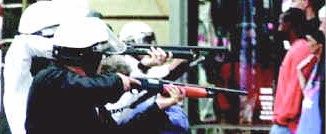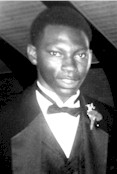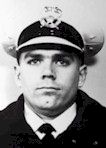Police
shooting of unarmed Black man sparks uprising
Cincinnati erupts
|
by Earnest Winston and
Vincent Muhammad
CINCINNATI (FinalCall.com)�The violent uprising
that erupted here late April 9 after a Cincinnati police officer shot and
killed an unarmed Black man was the result of years of racial tensions
between Blacks and the police.
 But Black residents say inequality in housing, employment and schools
also are underlying factors that sparked three days of civil unrest and
caused the mayor to declare a state of emergency and implement a citywide
curfew in Cincinnati. But Black residents say inequality in housing, employment and schools
also are underlying factors that sparked three days of civil unrest and
caused the mayor to declare a state of emergency and implement a citywide
curfew in Cincinnati.
The attention attracted international headlines and visits by civil
rights activists Kweisi Mfume of the NAACP, Martin Luther King III of the
Southern Christian Leadership Conference, Minister Jamil Muhammad, a
national spokesman for the Honorable Minister Louis Farrakhan and the Rev.
Al Sharpton.
Cincinnati historian Herbert Shapiro said poor race relations has been
a constant in this southwest Ohio city, which is 43 percent Black and is
known for its conservative image.
"Cincinnati has a particularly long history of racism and race
violence going back into the 19th Century," said Mr. Shapiro, who
participated in civil rights and war protests in Cincinnati in the 1960s
and is author of "White Violence and Black Response: From
Reconstruction to Montgomery."
"Cincinnati, while not quite a replica of the forms of segregation
in the Deep South, has until rather lately had many segregated facilities
and institutions. You have a city which in many ways prefers to really
ignore some of the drastic (race) problems that exist because confronting
them may�and should�lead to major changes in how things are
done."
Cincinnati�s troubled racial past includes the Ku Klux Klan�s
placement of a cross in downtown each winter and slurs by former Reds
owner Marge Schott in which she referred to some of her Black players as
"niggers." Also, the city ranks eighth as the most segregated
city in the country.
 The April 7 shooting of Timothy Thomas, 19, by Officer Stephen Roach
touched off Cincinnati�s worst racial violence since the 1960s and
boosts to 15 the number of Black males who have died at the hands of
Cincinnati police since 1995. Mr. Thomas was wanted on 14 misdemeanor
warrants, 12 of them related to minor traffic violations, when he ran from
police. The April 7 shooting of Timothy Thomas, 19, by Officer Stephen Roach
touched off Cincinnati�s worst racial violence since the 1960s and
boosts to 15 the number of Black males who have died at the hands of
Cincinnati police since 1995. Mr. Thomas was wanted on 14 misdemeanor
warrants, 12 of them related to minor traffic violations, when he ran from
police.
 The shooting and its aftermath has prompted the U.S. Department of
Justice to review the policies and procedures of the Cincinnati Police
Division. Hamilton County Prosecutor Mike Allen said he will send the case
to a grand jury. Officer Roach, who said he feared for his life because he
thought Mr. Thomas had a gun, is on administrative leave. The shooting and its aftermath has prompted the U.S. Department of
Justice to review the policies and procedures of the Cincinnati Police
Division. Hamilton County Prosecutor Mike Allen said he will send the case
to a grand jury. Officer Roach, who said he feared for his life because he
thought Mr. Thomas had a gun, is on administrative leave.
"This is my other son," said Angela Leisure, the grieving
mother of Mr. Thomas, during an April 9 appearance before city council and
police officials as she pointed to her son Terry. "I know he has a
[traffic] ticket; will he die too?" Later that night, the uprisings
occurred as demonstrators who police say were throwing rocks and garbage
cans, were fired upon with rubber bullets and bean bag projectiles as they
approached police headquarters.
Racial profiling and 30 years of mistreatment of Blacks by police is at
the heart of a lawsuit filed by the American Civil Liberties Union and the
Cincinnati Black United Front against the city. The NAACP has since joined
the lawsuit, which seeks a federal consent decree.
"We�ve tried talking. In our lawsuit, we describe a pattern of
30 years in which the city promises to do things and then it doesn�t do
them," said ACLU attorney Scott Greenwood. "There have been
umpteen panels and blue ribbon commissions and this group funded and that
group funded and so on. Everybody produces nice reports and then they�re
not implemented. My sense is that the Black community is not going to take
empty promises anymore."
City leaders say they have been responsive. In March, City Council
passed legislation prohibiting racial profiling. City Council has also
created the Cincinnati Citizens Police Review Panel, which investigates
alleged police misconduct, but critics say the panel has no teeth.
And in 1999, City Council approved a 19-point corrective action plan
developed by the Cincinnati branch of the NAACP against racial
discrimination in city hiring practices.
Not enough, said Cincinnati attorney Ken Lawson, also a plaintiff in
the lawsuit. He wants to change how the police chief and city manager are
hired.
"These police officers keep putting these young white cops in
these Black neighborhoods at night, and they�re scared as hell of Black
brothers," said Mr. Lawson, who is Mrs. Leisure�s attorney.
"So they�re shooting them first and asking questions later. All
that needs to change and it needs to be monitored by a federal
court."
Another commission formed
On April 16, Mayor Charles Luken lifted a dusk-to-dawn curfew that had
been in place for four days when he declared a state of emergency. Backed
by a contingent of local business executives and Black leaders during a
press conference at City Hall, the mayor also announced the creation of a
commission to promote economic inclusion.
"Cincinnati, because unfortunately of what�s happened, has an
opportunity to become a leader in the country. Out of this crisis comes an
historic opportunity for our community to make progress. We have an
opportunity for a new Cincinnati," he said, adding that the city can
become a model for race relations.
The mayor and vice mayor Minette Cooper, who is Black, also called a
special meeting at Final Call press time to consider a charter
amendment that would change the way Cincinnati�s police chief is chosen.
The current rules makes it nearly impossible to fire a police chief, the
mayor said. The charter amendment, if passed by voters, would give the
city manager authority to hire anyone from anywhere in the country.
Timothy Thomas was laid to rest April 14 under the glare of national
news media during funeral services at New Prospect Baptist Church in the
Over the Rhine neighborhood pastored by Rev. Damon Lynch III.
Bringing greetings and condolences from Min. Farrakhan, Min. Jamil
Muhammad, a Cincinnati native, told the mother and family of Min.
Farrakhan�s commitment for a closer relationship between the Nation and
the community.
"Now the burden is on the city of Cincinnati to do justice by its
Black citizens. And where there is no justice there can be no guarantee of
peace and order in the streets of this beautiful city," he told the
audience.
Outside the church, he reiterated to the crowd, "If we�re angry,
we must be angry enough to love each other. If we are fed up, we�d
better be fed up enough to respect our women, clean up our communities and
raise our children into the knowledge of self and God and the knowledge of
right and wrong and what must be done. What we saw was the pent-up
frustration of a people whose righteous indignation spilled over into a
hue and cry from the streets of Cincinnati."
"God still uses ordinary people," NAACP executive director
Kweisi Mfume told the packed church. "And although ordinary in his
life, he is extraordinary in his death. Because he got us talking to each
other and looking at each other."
Gov. Robert Taft and Mayor Luken, also addressed mourners. Mr. Luken,
who hadn�t planned to speak, apologized again to Mrs. Leisure and her
family, bringing a standing ovation from the audience.
"Words cannot express our sorrow," said the mayor. "I
pledge to you the city will be better one day."
But even as the funeral ended and mourners and protesters walked
through the streets, police fired on protesters, injuring three people.
Several witnesses described the bizarre event as something similar to a
"police drive-by" that appeared to be unprovoked.
Cecil Thomas, a former police officer who now leads the Cincinnati
Human Relations Commission, said he saw three Cincinnati cruisers and one
Ohio State Highway Patrol car drive up. Officers and troopers jumped out,
he said, fired into a small crowd that "wasn�t doing
anything." They then got back into their cars and were gone.
"I knew how hard we had worked to keep these people calm," he
said. "I�m just hoping that there�s some (provocation) that I
might�ve missed."
Police said this incident also will be investigated.
Protest peaceful at first
During the April 9 protest that ignited the uprising, members of the
Fruit of Islam who had been monitoring events via television and radio
news reports and by listening to police scanners, responded to police
headquarters and were greeted with cheers by protesters and also welcomed
by the officers.
"We certainly appreciate the help of the Nation of Islam being
here," Police Chief Thomas Streicher told The Final Call.
Charles Hues, an elder protester standing in the crowd, said,
"This is the 1960s repeated all over again. I hope that our youth
here are able to control themselves and stay out of anything that is being
planned by the police against them.
"I�m glad to see that the brothers from the Nation of Islam are
here because we place a lot of faith in Minister [Louis] Farrakhan and the
Nation of Islam. You�ll show us the right thing to do and the right way
to do it."
The F.O.I. walked among the demonstrators, calming protesters and
bringing some discipline and hope to the crowd. After several hours, the
F.O.I. left the scene, followed by many of the protesters who then went
home. Shortly thereafter, however, demonstrators were dispersed by police
firing tear gas and rubber bullets.
During the third day of the uprising, young people started a
spontaneous march from the site where Roger Owensby Jr., an unarmed Black
man who died at the hands of police from suffocation Nov. 7, 2000. Mr.
Owensby Sr., the victim�s father, said the trial for the two officers
indicted for murder of his son was moved from May 14 to some time in
October, and he hadn�t been given a confirmed date.
Mr. Owensby told The Final Call he thinks the trial was
postponed because the city didn�t want the truth about his son�s death
to come out due to fear of more uprisings.
Photos: #1-Cincinnati Police with weapons drawn during
uprising.; #2-Timothy Thomas; #3-Officer Stephen Roach.
|

![]()